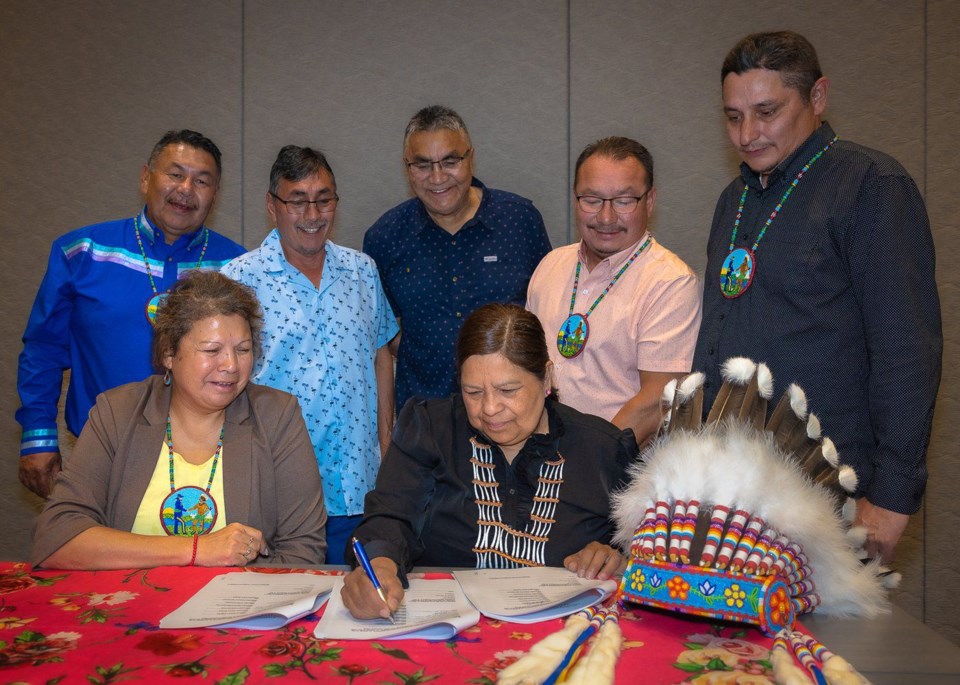STURGEON LAKE FIRST NATION — The members of Sturgeon Lake First Nation (SLFN) have overwhelmingly approved a historic settlement agreement with the federal government, securing approximately $152 million for the community.
The approval came following a community vote held from July 22 to 26. This significant settlement resolves SLFN’s Agricultural Benefits Settlement Agreement, also known as the longstanding "cows-and-plows" clause of Treaty 6.
The settlement addresses unfulfilled promises made by Canada to provide agricultural tools and support to the Cree community, located about 50 km northwest of Prince Albert.
“I'm thrilled that Sturgeon Lake has secured that $152 million from the federal government through a groundbreaking settlement. This money will help us to address the promises that were made during the signing of our Treaty 6 that were never fulfilled,’’ Chief Christine Longjohn of Sturgeon Lake First Nation said.
The community has approximately 3,100 members who will benefit from this settlement.
“Now we have finally come to an agreement and so now we have a plan going forward and it's going to make a huge difference for all of our 3,100 band members that are living, whether they live on the reserve or within the urban settings, off reserve, so it's going improve the lives of everyone for sure,” Longjohn said.
Longjohn explained that there is a lot of farming that occurs in Sturgeon Lake and this will help address that gap.
"This is a major milestone for us and I also want to thank everyone who participated and supported this historic decision and that's the membership of Sturgeon, we owe a huge thank you for them participating in the ratification vote as well,” Longjohn said.
The settlement process first began in 2018, under the leadership of former Chief Greg Ermine.
This initiative arose following the discovery that Canada had failed to fulfil its obligations under Treaty 6, which was signed in 1876. Specifically, Canada had not delivered the promised agricultural tools, seeds and livestock that were crucial for the community's economic development and self-sufficiency.
In 2019, Sturgeon Lake First Nation formally filed a claim to seek redress for the unfulfilled treaty commitments.
Longohn also thanked the membership for their work throughout the whole process of meetings and information sessions since 2019 to get the right plan in place.
The community vote saw a turnout with 51 per cent of eligible members participating. The majority required to pass the vote was 554 (50 per cent plus one of participating voters). With 88 per cent of voters supporting the agreements, the community has demonstrated overwhelming approval and commitment to advancing justice and prosperity for the people of Sturgeon Lake First Nation. Longjohn called the 88 per cent turnout of eligible voters impressive.
"It just shows us how united and committed we are to moving forward together. So it's a huge win for our nation and it's also a huge win for the communities and the cities around us because a lot of them will see economic growth,” Lomgjohn said.
Longjohn said that the money will flow back into larger communities which band members serve and into the province.
The approval of the settlement agreement, trust agreement, and finance code enables SLFN’s leadership to proceed with signing all necessary documents and implementing this agreement.
Longjohn explained the deal is now settled as intended in the clause and this is a one-time settlement.
With the ratification vote complete, Longjohn and the Council will proceed with the formal signing of the settlement agreement. When that step is complete, it is then up to the Minister of Crown-Indigenous Relations to sign the settlement agreement on behalf of Canada.
The process of having the minister sign the agreement and transferring the settlement funds is expected to take about six months.

.png;w=120;h=80;mode=crop)


